There are so many superlatives I want to tell about in our next 17 days:
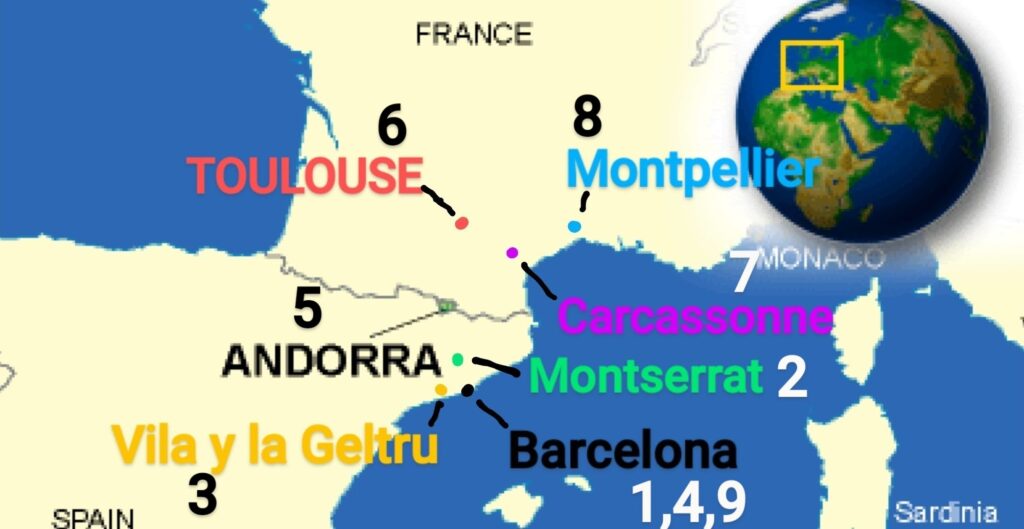
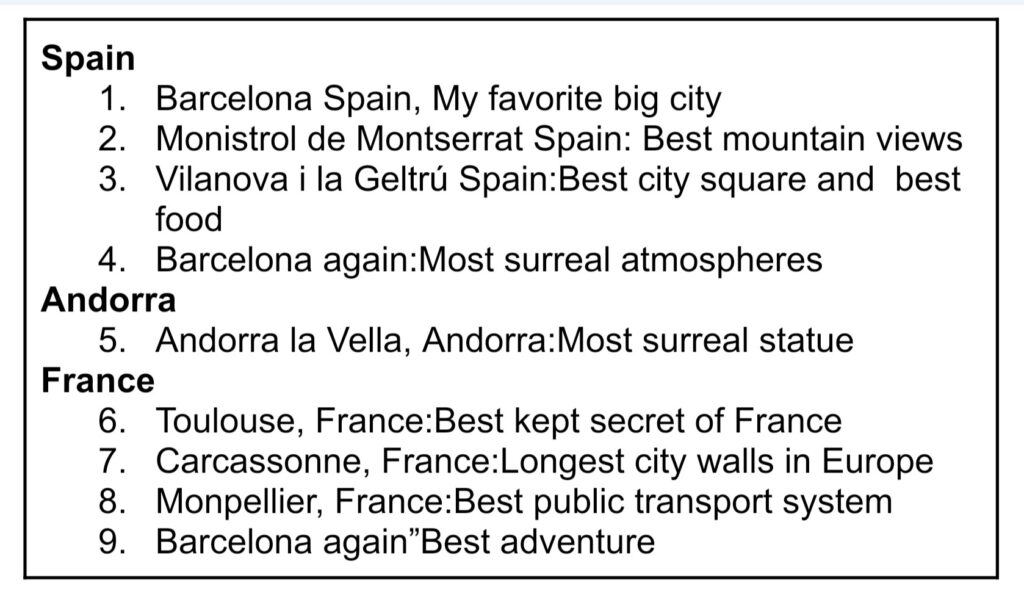
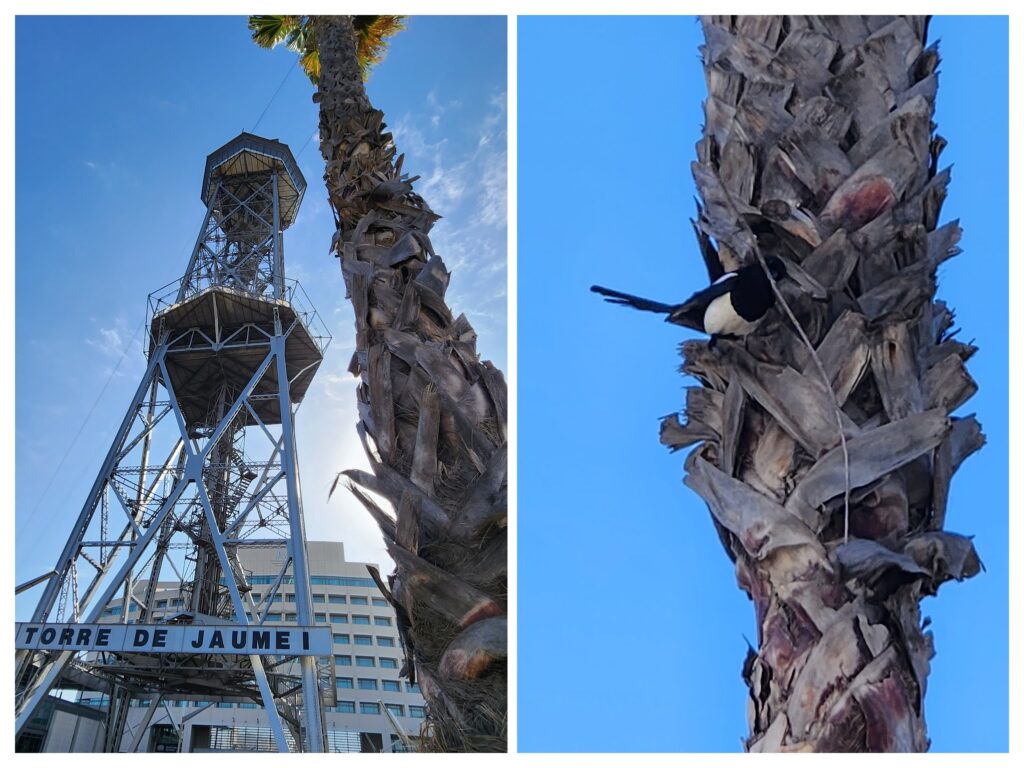
Barcelona Port
We left the ship by the port shuttle bus. Here we waited for a local bus. The Torre de Jaume (picture) holds up the aerial tram that runs from Torre Sant Sebastià at Barceloneta Beach (north), over this tower, and on to the Miramar station on Montjuïc Hill (south). It is a cool ride, but no boarding at this location.
A magpie is snatching a straw from the palm tree for its nest while we waited on this gorgeous morning.
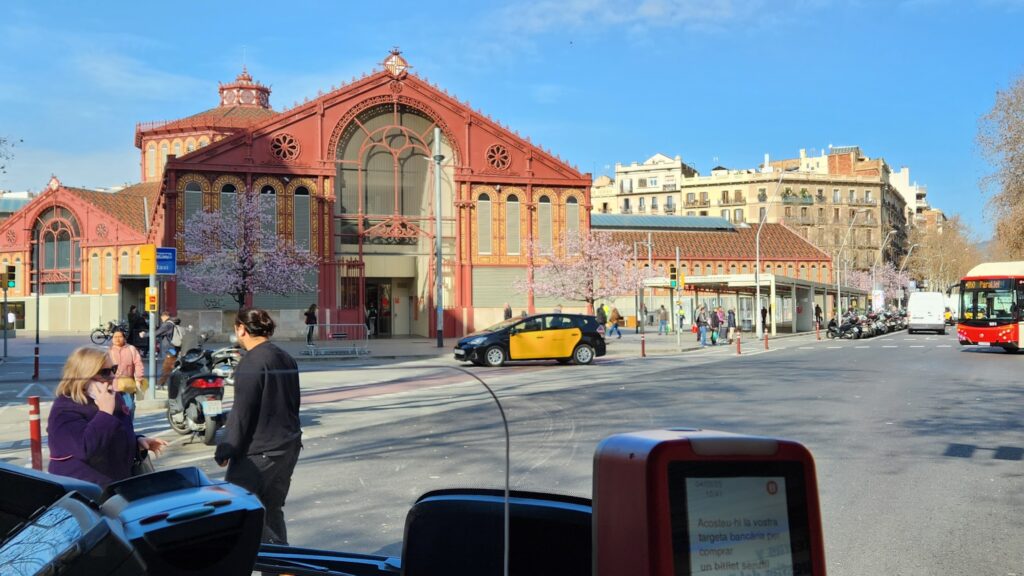
Above: (view from a bus) Red brick and glass Victorian era Market Hall in Barcelona. This “Mercat de Sant Antoni” is a landmark.
We headed straight out of Barcelona because we had Soccer match tickets for later in the week and would be back soon. We used buses and a train to get to the Monterssarat Mountians and the small town of Monistrol
Monistrol de Montserrat
This town is just at the base of the mountains. Montserrat means serrated, can you guess why? More than 2 million people will visit the Monistery here this year. Almost all will come and go on a day trip. We opted to stay over and booked two nights in this beautiful town that most people never see.
Its beautiful village square was just an easy walk from the train station over a bridge and along the well-preserved ruins of a 17th-century aqueduct. When we left it was market day:
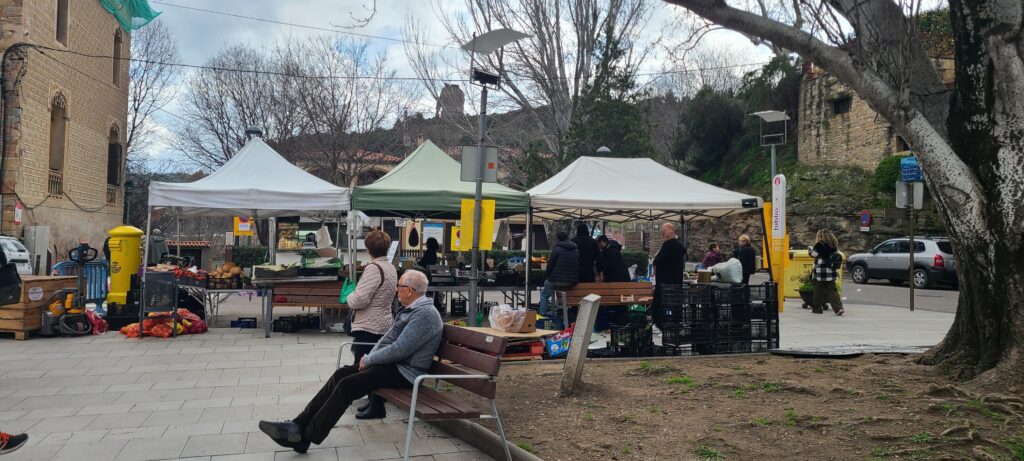
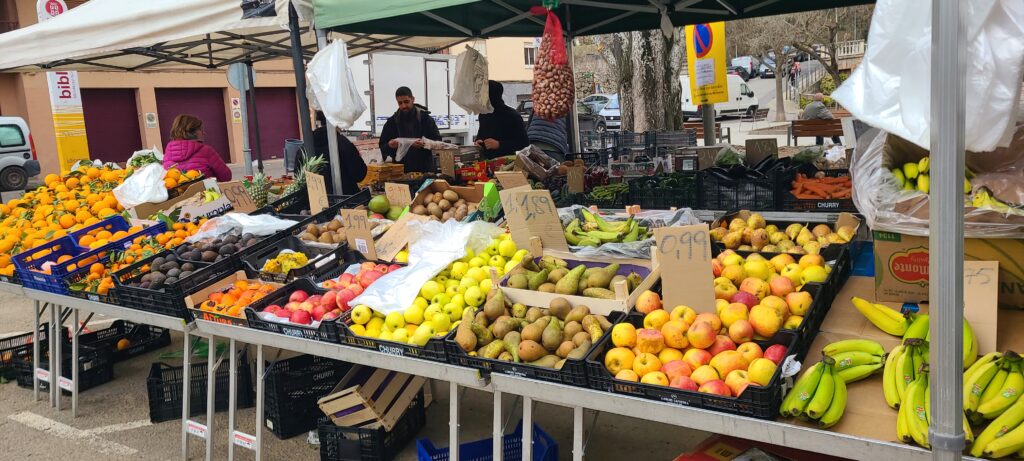
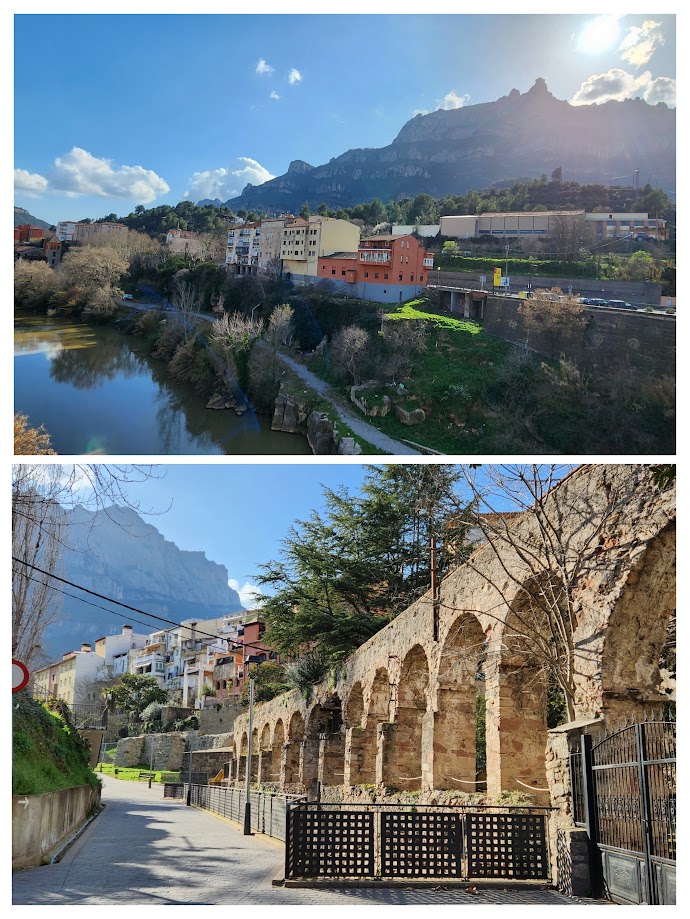
A Cog train climbs up the mountain to the Monastery where the combination of panoramas and weird rock formations was magical.
Christian hermits inhabited this location for its beauty and isolation since the 6th century. A Benedictine monastery was founded here in 1025. Today, it is a site of pilgrimage for the many who wait in line to touch the orb held by the statue called the Black Madonna (La Morenta) to receive her healing blessings. We walked and relished the scenery. There is another funicular lift to the top of the ridge. We saved that for the next time we come. Nest stop: Vilanova i la Geltrú

A short travel southwest of Barcelona brought us to the port city of Vilanova i la Geltrú. This is a surprisingly beautiful town, even in the rain. It offers both stunning Romantic architecture and a nearby sandy coast. In the summer, it overflows with sun-worshippers. But I like the off-season with no crowds and better prices at hotels and restaurants.
A bronze statue (below) surveys the square from a high pedestal. He is Tomàs Ventosa i Soler 1797-1874. At the tender age of 12, he emigrated to Matanzas, Cuba. There, he made a fortune in the textiles industry and trade. He used his wealth to build the surrounding main square, arcades, and buildings (see panorama above), including the town hall. Lucky for us, he had wonderful taste. He also targeted illiteracy and founded free schools for boys and girls. He financed similar projects in Matanzas, and an identical statue stands there. We were there in 2019. As we travel, the world seems to get smaller and more connected. I like that.
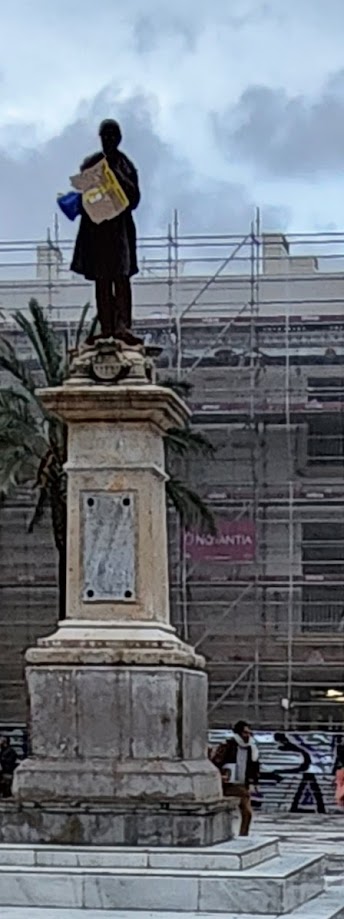
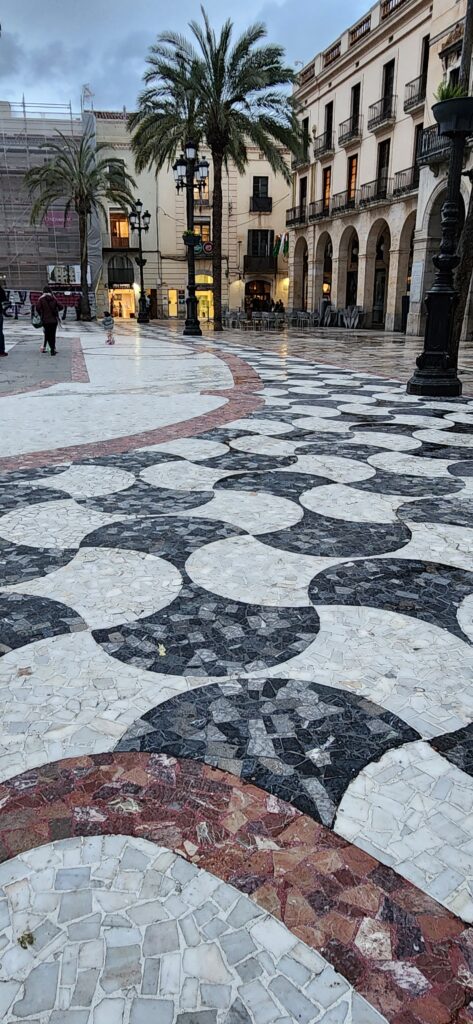
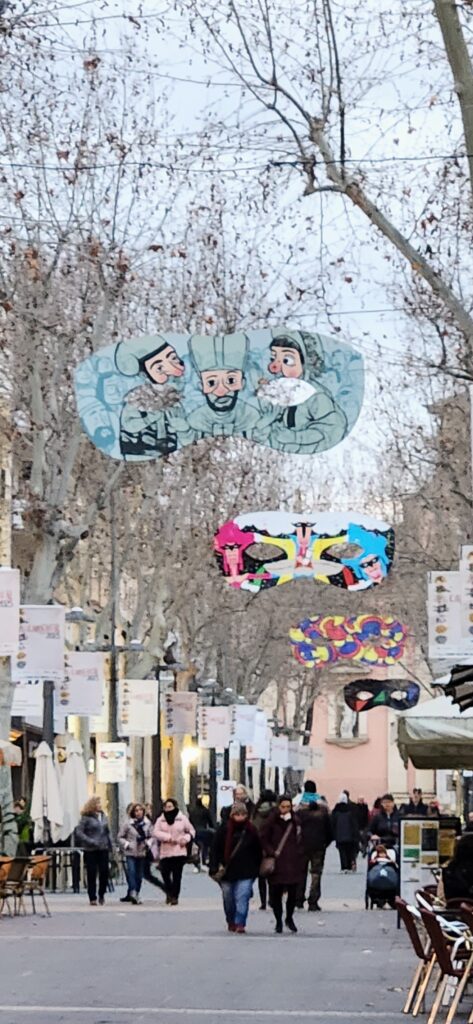
We arrived amid post-Carnival chaos. On “Fat Tuesday,” there was the traditional huge food fight: the throwing about of lots sticky meringue ( a local specialty). Doesn’t that sound very fun and very messy?
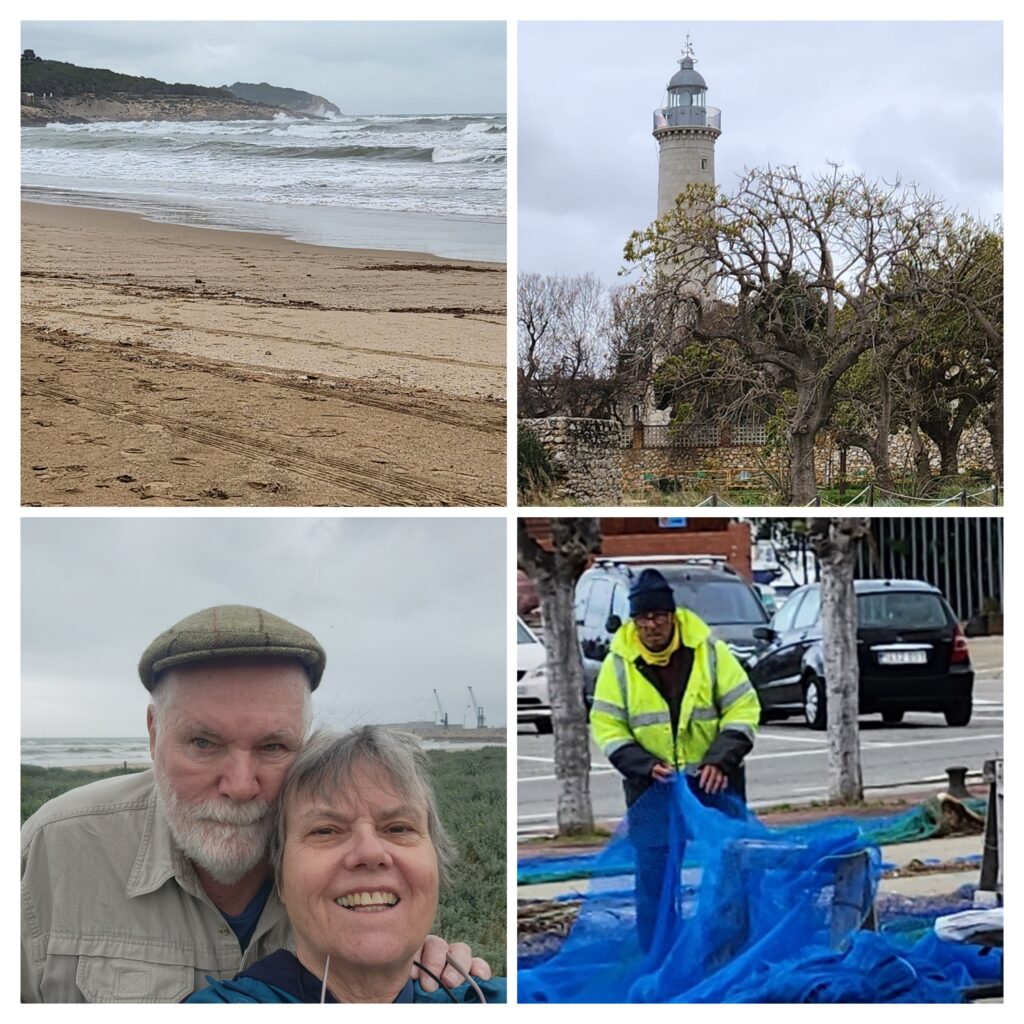
An easy walk to the beach takes you past the working port full of a great variety of boats, especially fishing boats. There is a large paved area reserved for drying and repairing of nets.
The old lighthouse is picturesque.
Boardwalks make hiking along the beach a lot easier for the likes of us. The clouds and waves added to the ambiance.
Did I mention the fabulous meal we enjoyed
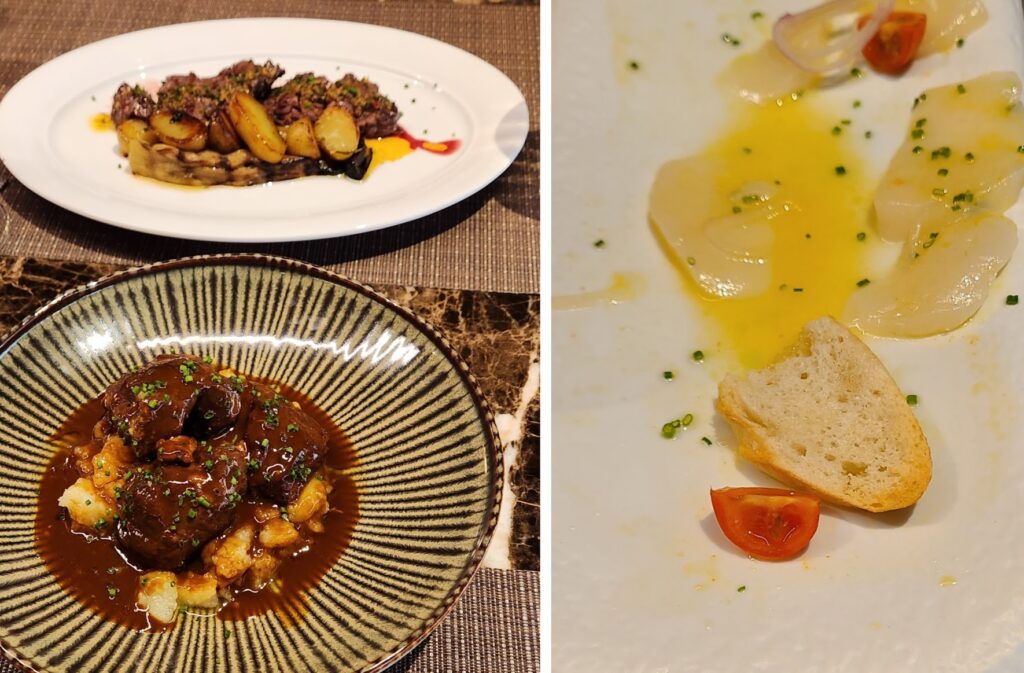
Lamb ribs, braised beef and fish with a lemon sauce. It was the best meal of our trip.
And then we returned to Barcelona for two nights and a soccer match. We were very excited. Barcelona was having a great year.
Barcelona is my favorite of the large EU cities that I have visited. The Basilica Sagrada Familia is a must-see, so is everything designed by Antonio Gaudí. There is a lot to see and do. This was our third visit.
Getting to the stadium was a favorite moment: We found the stream of free buses loading up the lines of fans at the Plaça d’Espanya (another great sight). It was dark. The overcast was heavy, but visibility on the ground was good. The buses left us where we walked along an avenue lined with futuristic columns of light. We approached the Barcelona Olympic Stadium, temporary home for Barcelona FC (football club) (photo lower right). It looked straight out of a Batman comic book: bold and scary. Then I turned around and beheld another venue, the Palau Sant Jordi arena: a huge pavilion looking like a flying saucer. It was surreal.
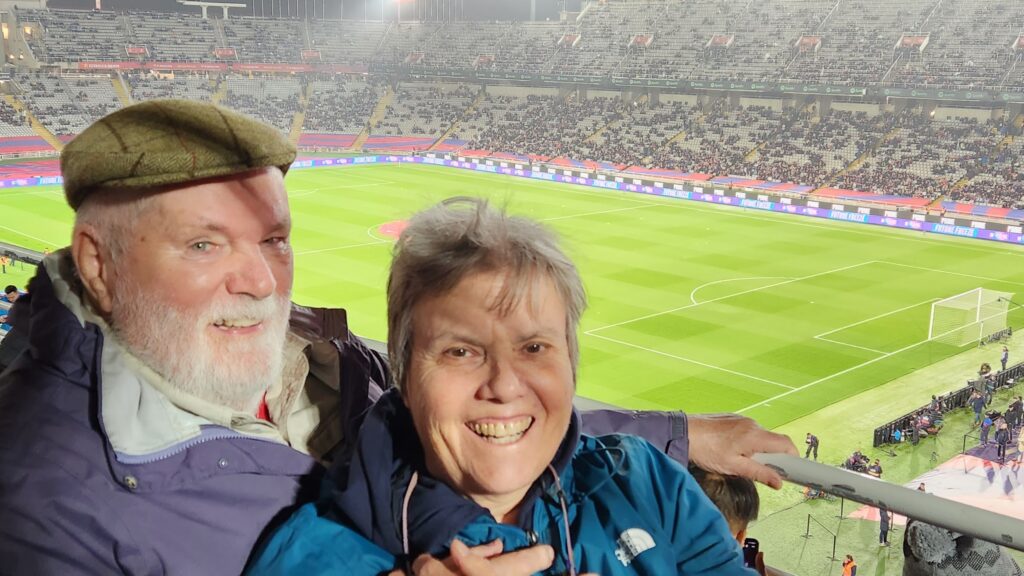
Long-short: We get to our seats just in time to hear announcements we don’t understand. Then the rows of people around all get up as if now they all need to use the restroom. Noticing our English, a nearby fan updated us: the team doctor had just died, and the game was postponed. So our tickets got refunded online, and the evening’s adventure was free.
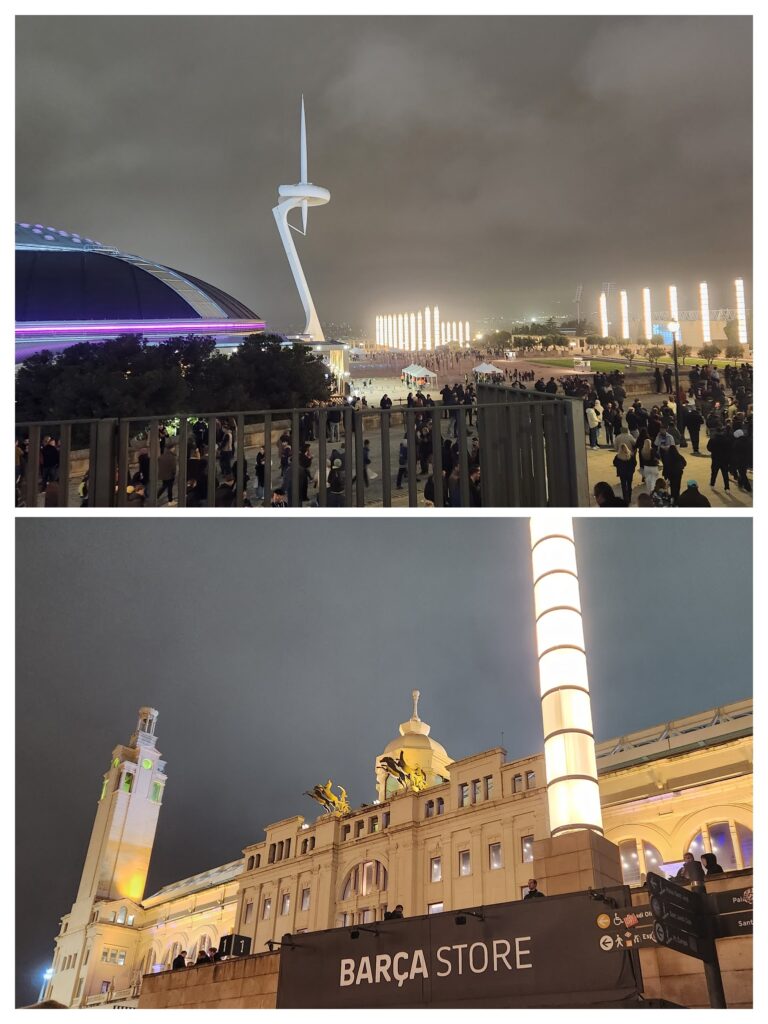
Then off we went to the country of Andorra, a 3-hour bus. Why not a train?
| Quick Travel Tip: I love train travel. But increasingly we opt for buses because: 1) Buses go to thousands of places that trains do not. 2) When traveling by bus, you see the prettier “front door” of a town compared to the industrial “back door” that trains typically pass through. 3) Trains spend so much time in trenches and tunnels built to accommodate their need for a steady incline, further obstrucing the views. 4) Buses are almost always cheaper than trains. 5) And no trains go to Andorra. It’s just too mountainous. |
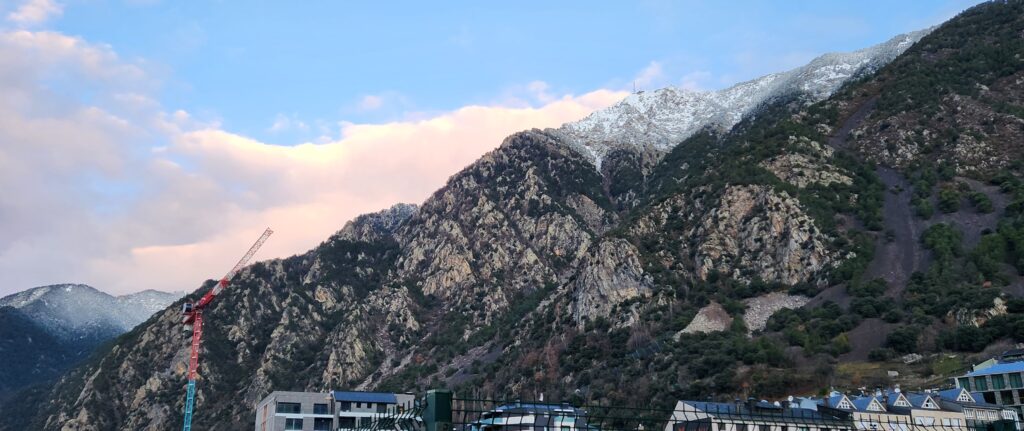
Here is some of what makes Andorra an unusual country:
- According to the charter of 1278 it has two rulers: one is the President of France and the other is the Bishop of Urgell in Spain.
- With a population of 85,000, it attracts 8 million visitors year round for mountain sports and duty-free shopping. (Only a third of the residents are Andorran nationals.)
- Its only official language is Catalan.
- It offers a tax haven: 10% for corporations vs 25% in Spain.
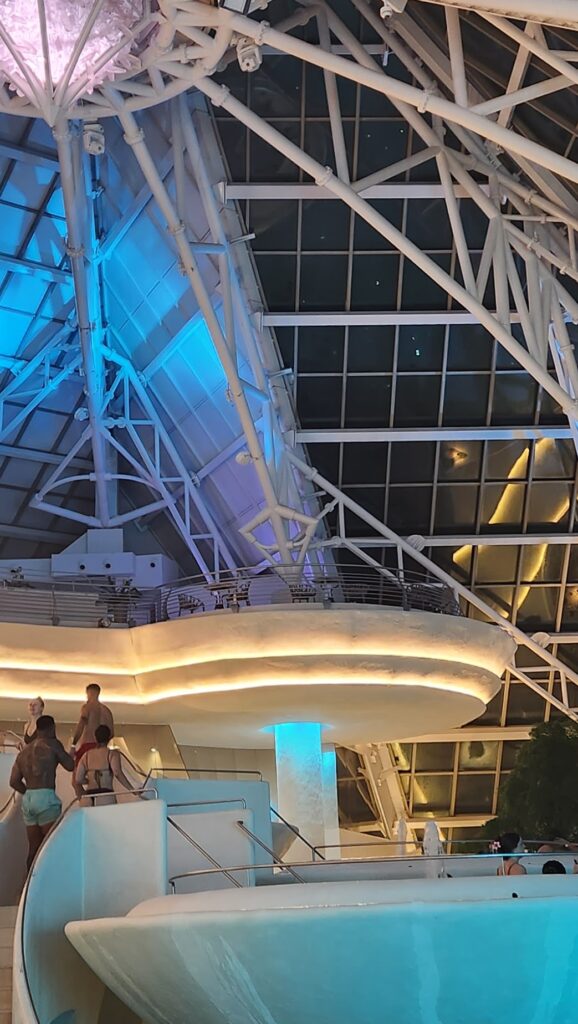
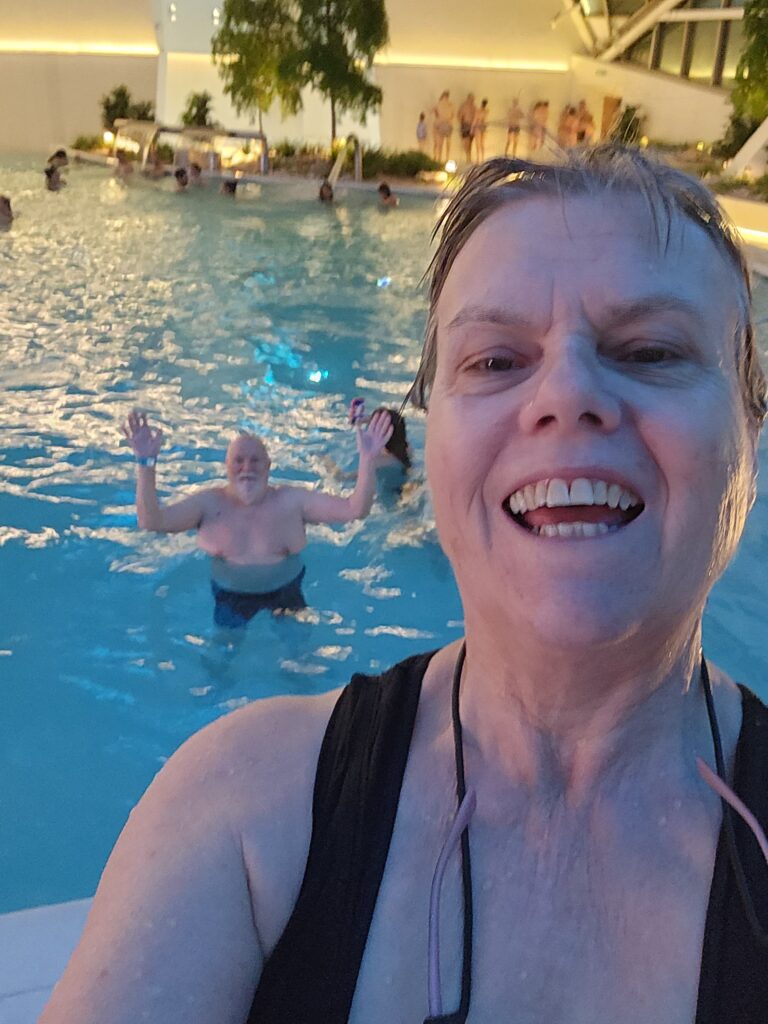
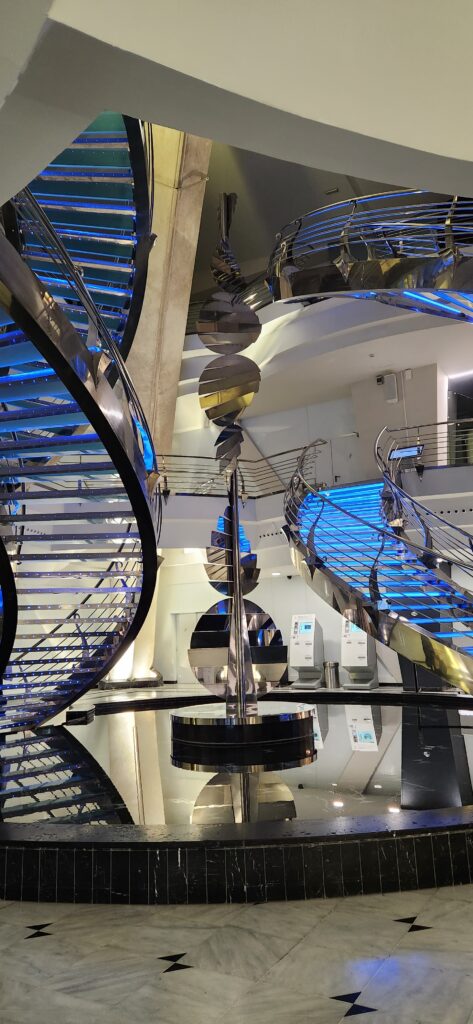
The capital city of Andorra is Andorra la Vella. In two day there we visited the elegant Thermal Spa. We took local buses and saw other towns and the mountains. A Salvador Dali statue called “Nobility of Time” (photo below) is the centerpiece of the main square. What I liked most was looking up at the mountains everywhere.
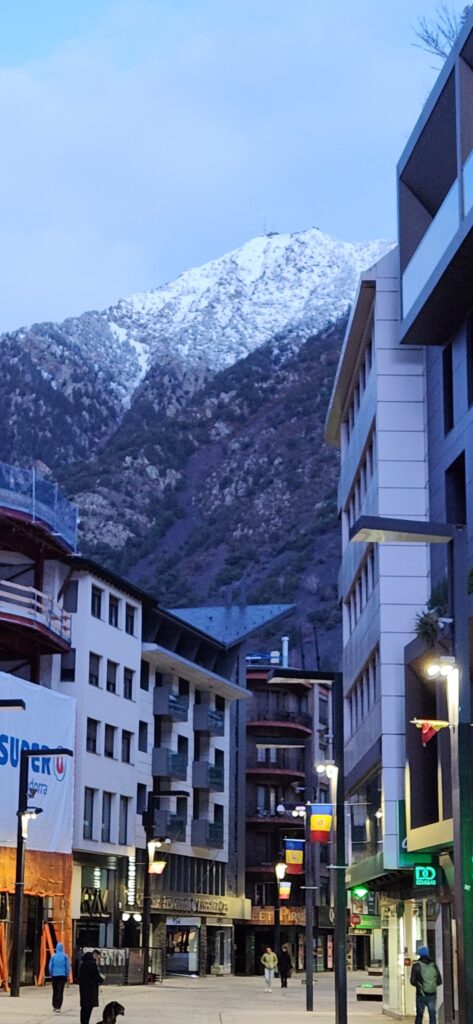
Andorra la Vela
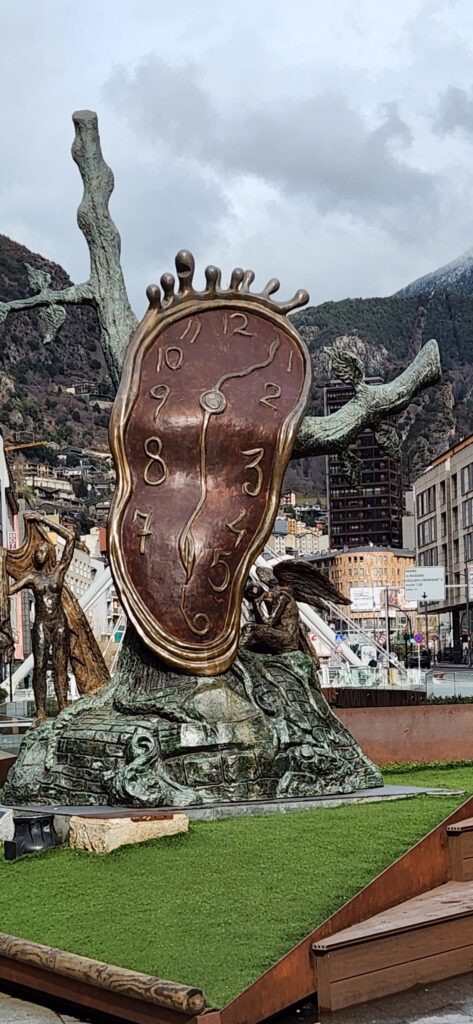
Another bus took us down the back side of the Pyrenees mountains. It was very steep and windy. It was also snowing. Next stop: Toulouse, France.
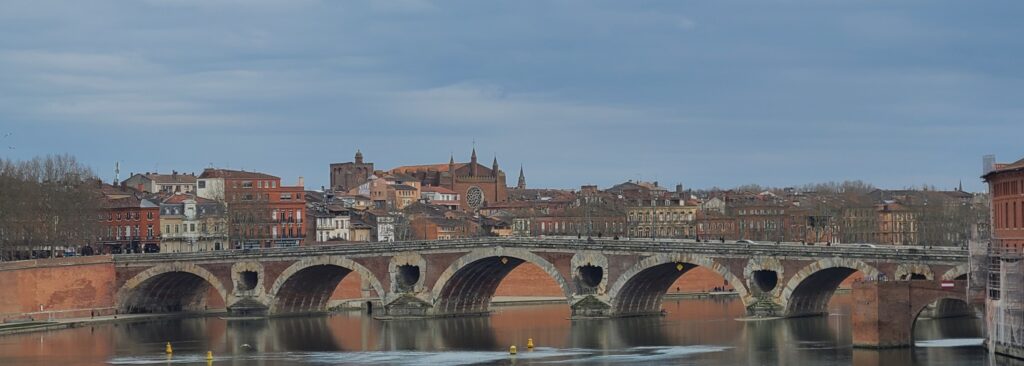
Toulouse is the best-kept secret in France (according to me). Three reasons:
- It’s a beautiful city: with lovely architecture, mostly pink brick, and views along the Garonne River. Its old city has not been swallowed up inside the modern city. It remains airy.
- Its history is complex, going back to Roman times and beyond.
- It’s Basilica St.Sernin is one of the largest Romanesque churches in the world: stunning, inside and out, a World Heitage Sight.
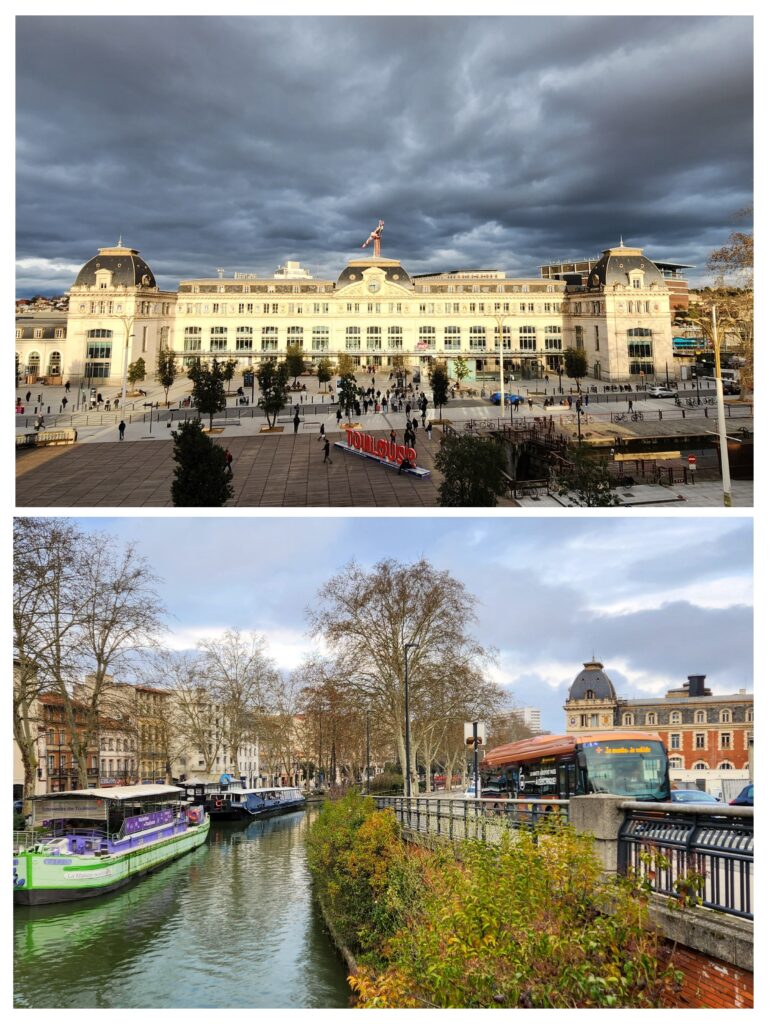
Toulouse gained its wealth and prestige because of its location on the Garonne River that flows to the Atlantic (access to Paris and London and beyond). Yet it is not far from the Mediterranean Sea. This made it a valuable port city since Roman times and earlier.
The big deal came in 1694 with the completion of a canal system connecting the Garonne by water to the Mediterranean Sea. The Canal du Midi is both beautiful and a marvel of 17th-century engineering. It boasts 328 locks, bridges, tunnels, spillways, and aqueducts. It connected Rome and Marseille to Paris by waterway without going around Spain before the days of railroads.
Toulouse is home to a leading University. And It is the Aeronautics and Space capital of Europe. It is also ther 4th largest city in France. (Who knew?)
Photos: Top left: Beaux Arts style Train station / bottom left: The Canal du Midi, which is still used recreationally.
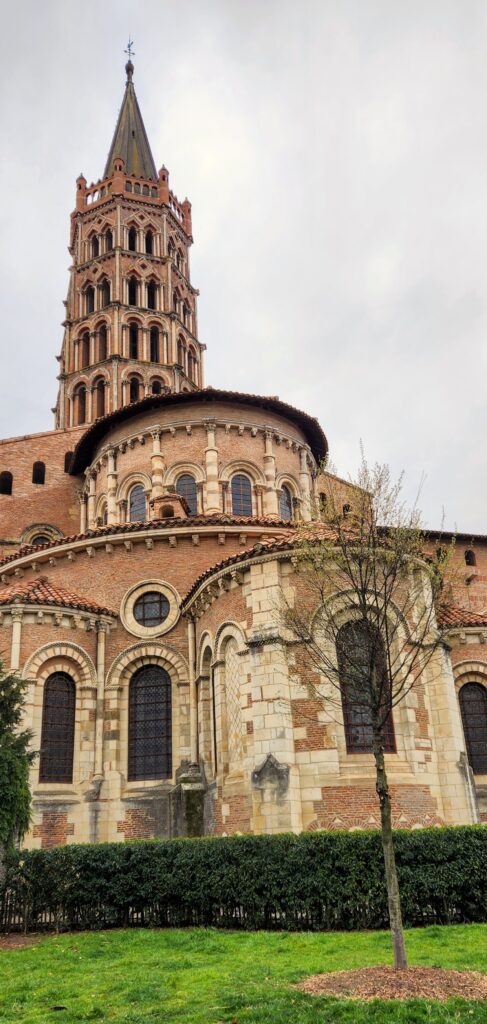

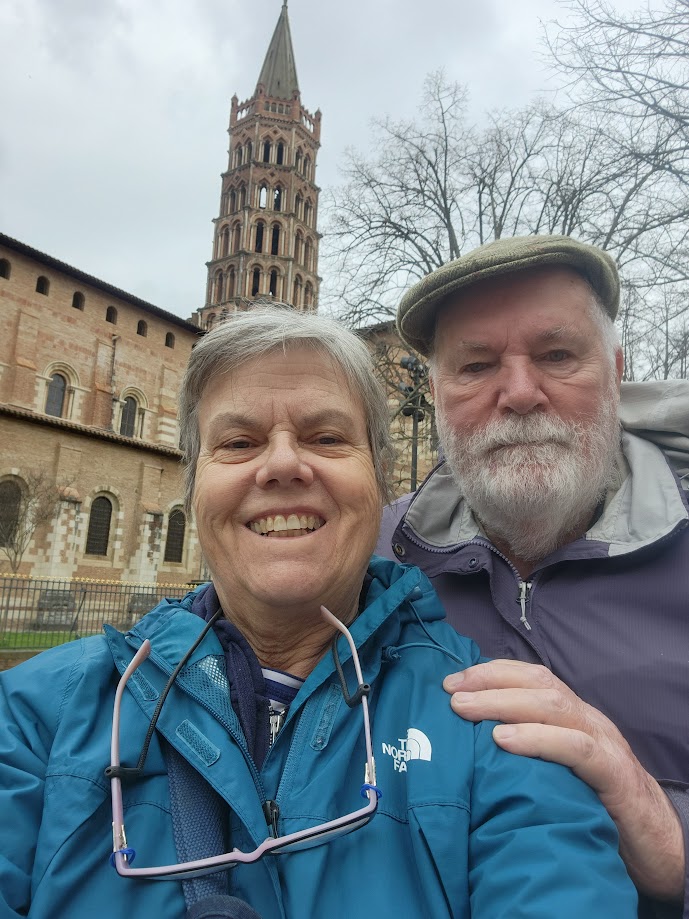
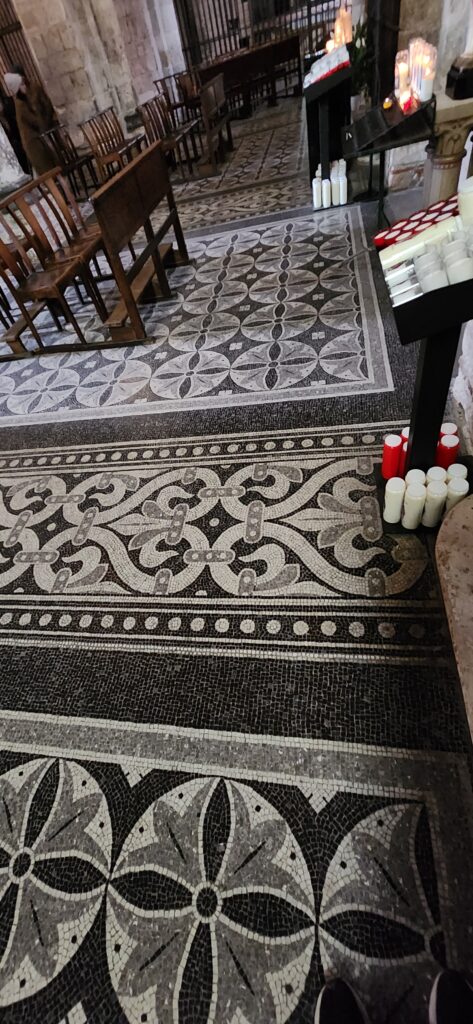
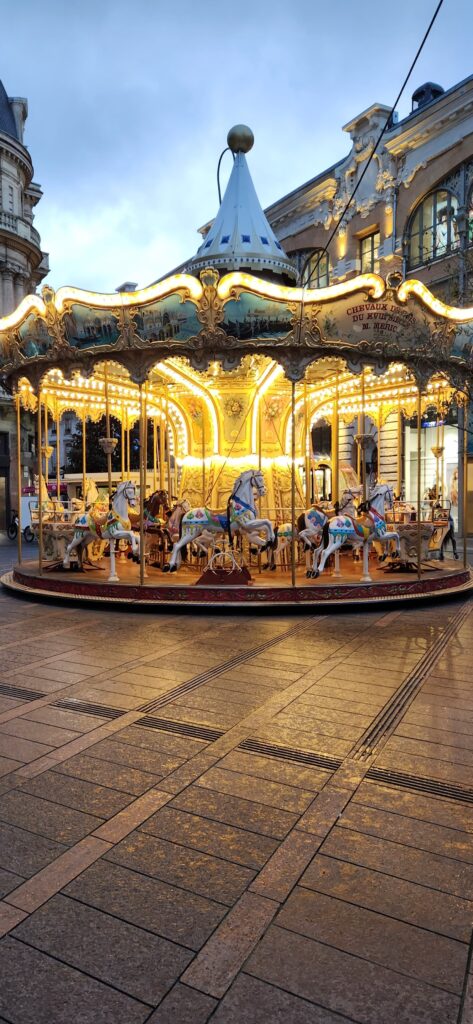
Then off to Carcassonne. Its walls and Medieval city (below) are astounding .

La Cité de Carcassonne is a medieval fortification with features that include:
- Double Walls: Approximately 3 km of ramparts (the longest in Europe) with 52 towers, including an inner and outer enclosure.
- Château Comtal: A 12th-century fortress castle within the walls.
- Basilica of Saint-Nazaire: Romanesque and Gothic cathedral with notable stained-glass windows, constructed between the 9th and 14th centuries.
Medieval Layout: Two huge city gates (Porte Narbonnaise and Porte d’Aude), cobbled streets, and a concentric defensive system reflecting Gallo-Roman, Visigothic, and medieval influences.
In the 1853 the architect and preservationist, Viollet-le-Duc was hired to study the medieval features and preserve these as much as possible. This project took decades and continues to this day.
It is one of 44 sights in France of cultural and historical value as determined by UNESCO, a UN organization.
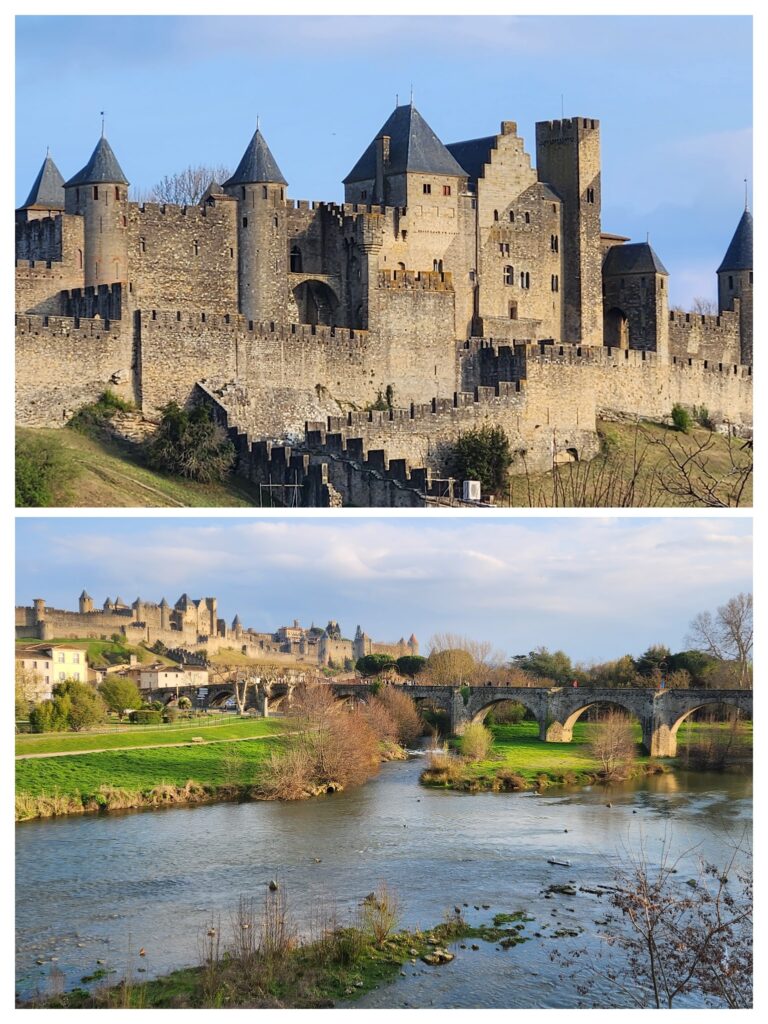
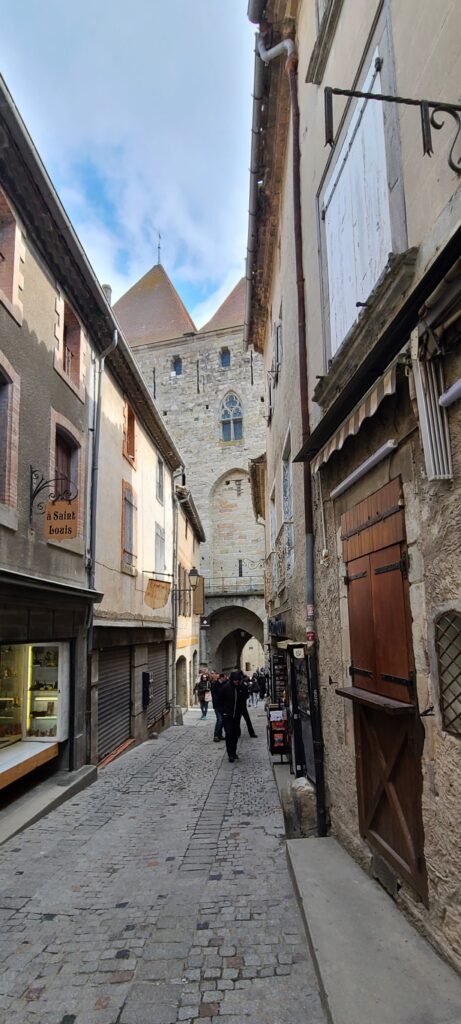
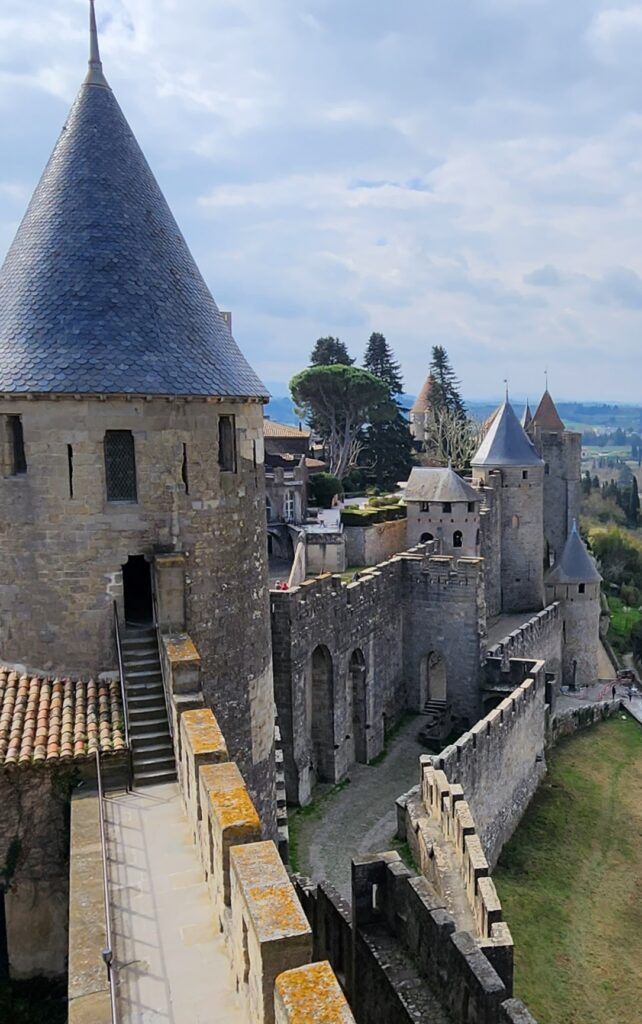
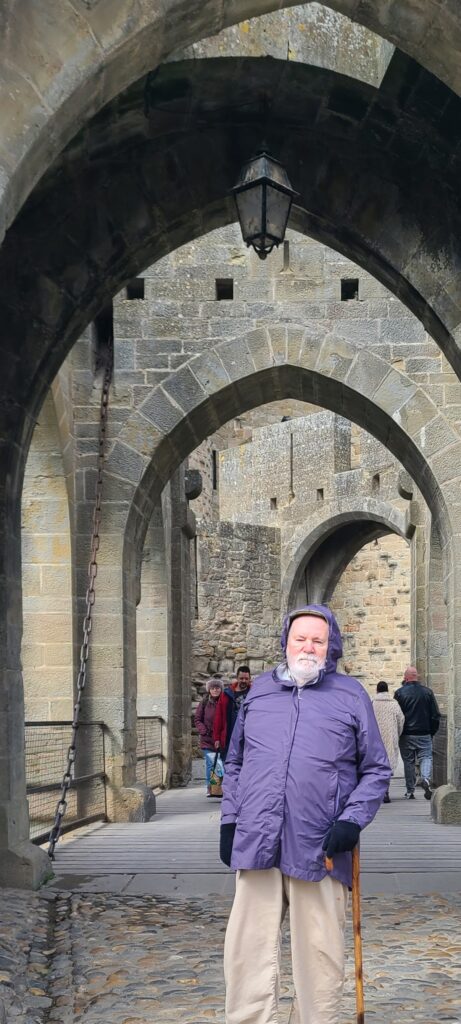
Then we went on to Montpellier by 2-hour bus. It is in the heart of what is called “The South of France”.
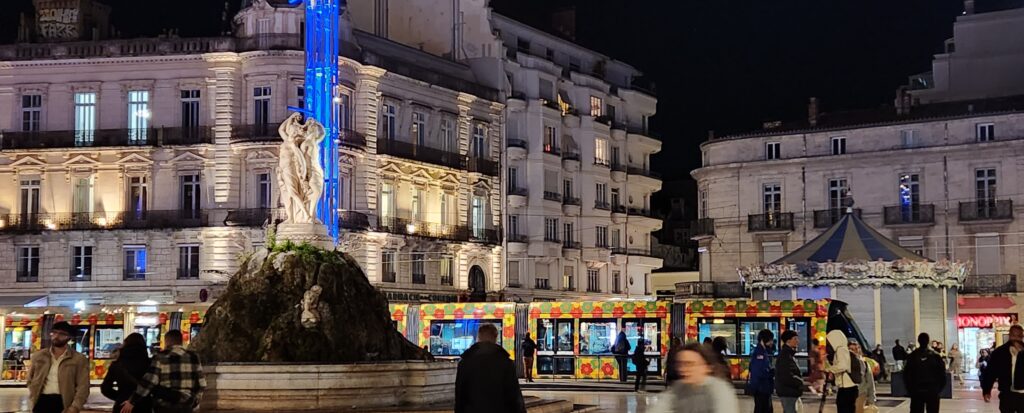
Montpellier has it all: a large pedestrian-only zone with modern street cars going everywhere, students everywhere, notable architecture everywhere, a gorgeous fountain, fabulous lighting, and even a carousel. Parks, promenades, and medieval streets are all an easy walk away. We needed another day to enjoy the beaches and to see a winter habitat for wild flamingoes. We must return.
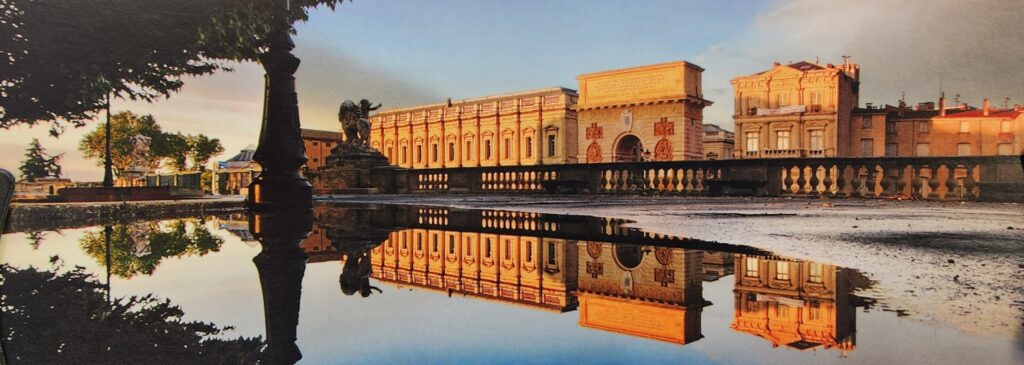
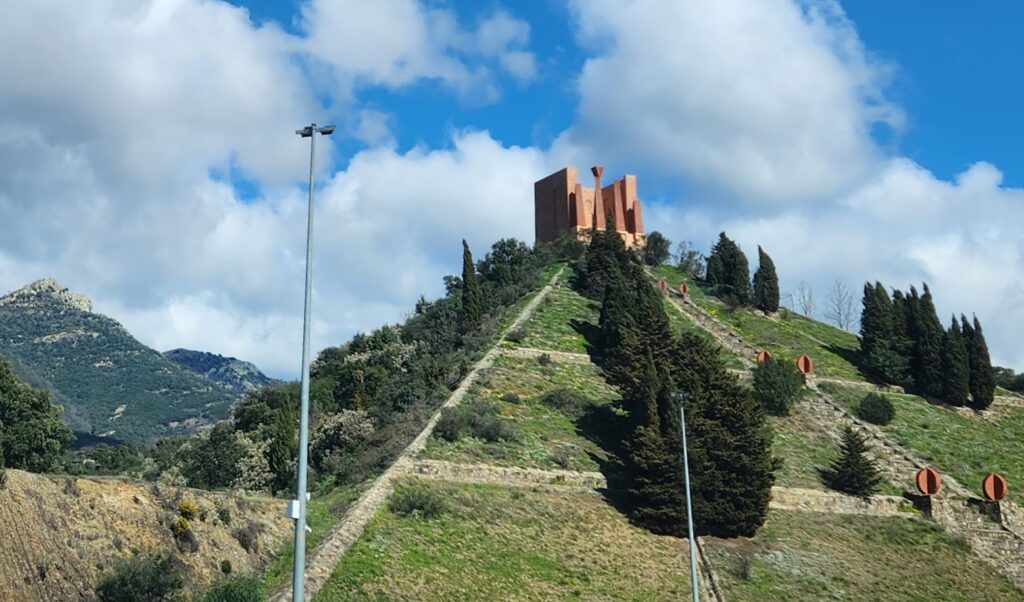
We boarded a bus to Pergignan, but never got there. Instead, we got left behind at a rest stop with our luggage still on the bus. A Slovenian couple was watching our apparent distress, and came to our rescue. They drove us 2 hours to Barcelona and got us to the bus station 10 minutes before our bags did. Along the way, we enjoyed rich conversation as their English was masterful. We are so grateful for angels like Nina and Gal from Llublianya. (Mark with our bags in Barcelona!-below)
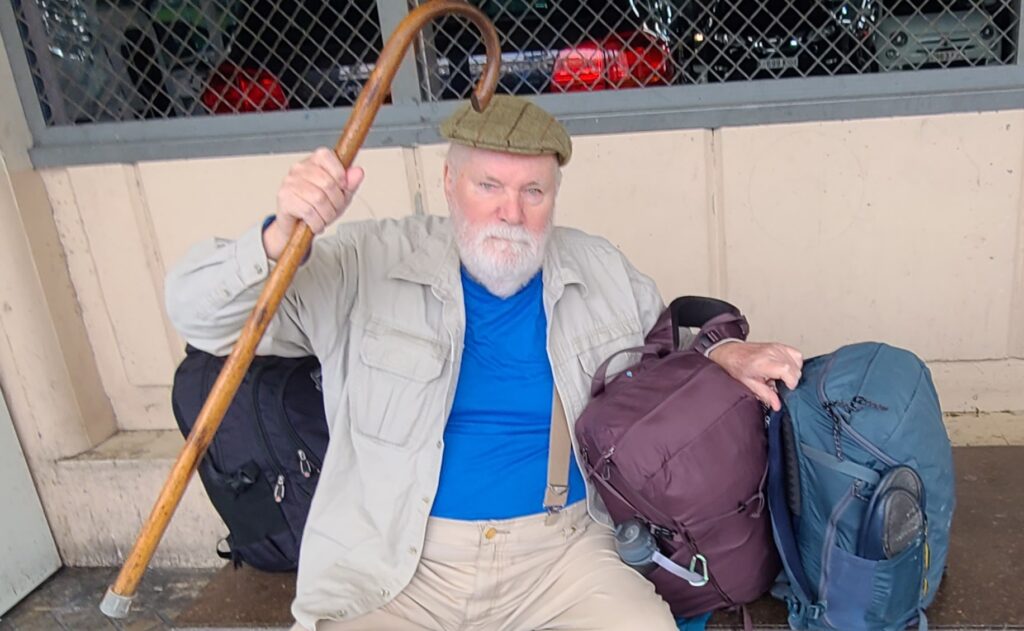
We passed this monument (above): Le Perthus Pyramid. It is near the border of Spain and France and celebrates the importance of the Pyrenees Mountains in the history and culture of the noble region of Catalonia.
Click the photo to enjoy the moves of this Catalonian Dancing Dog.
We headed next to Cairo. This would be a test of our travel modus operandi: “go now, plan later”. We had only a 4 night hostel booking in Cairo.
We would fly from Barcelona to Warsaw to Cairo and get a good look at the Alps from the Italian Side (below). We arrived at Cairo International Airport at 10:30 pm.
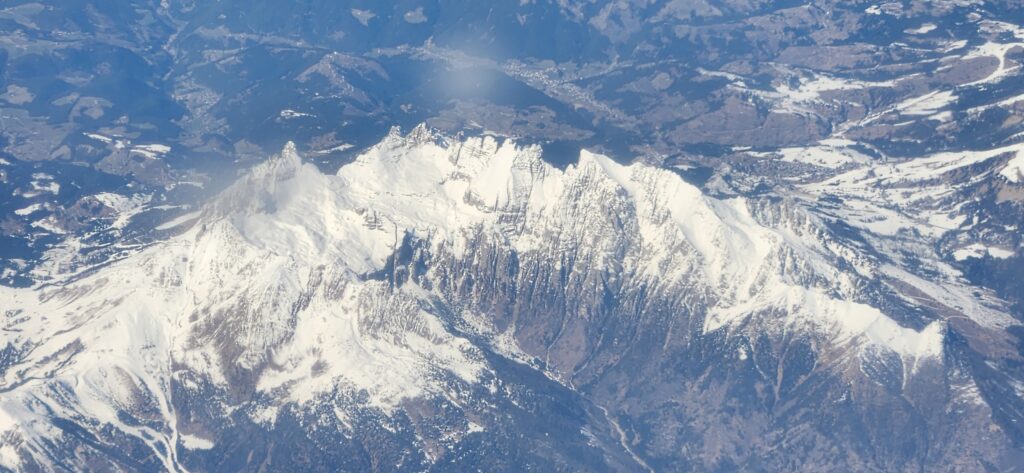

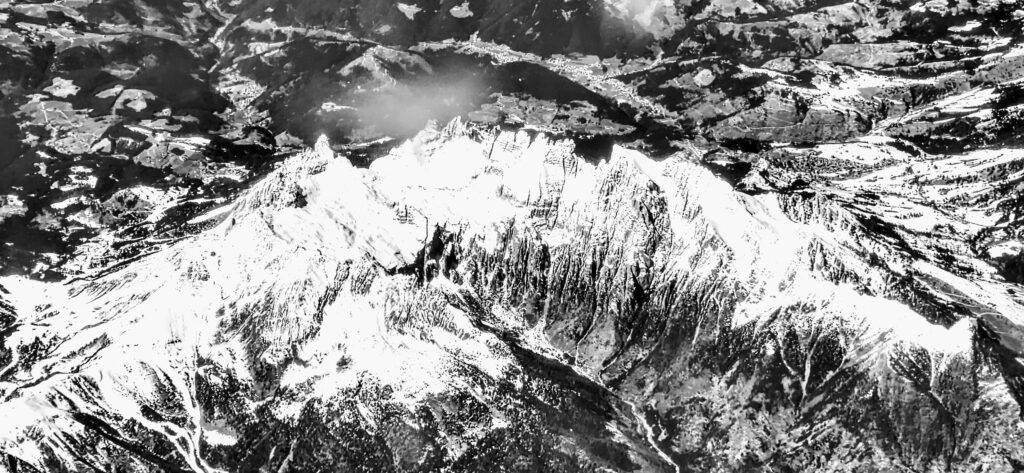
Leave a Reply